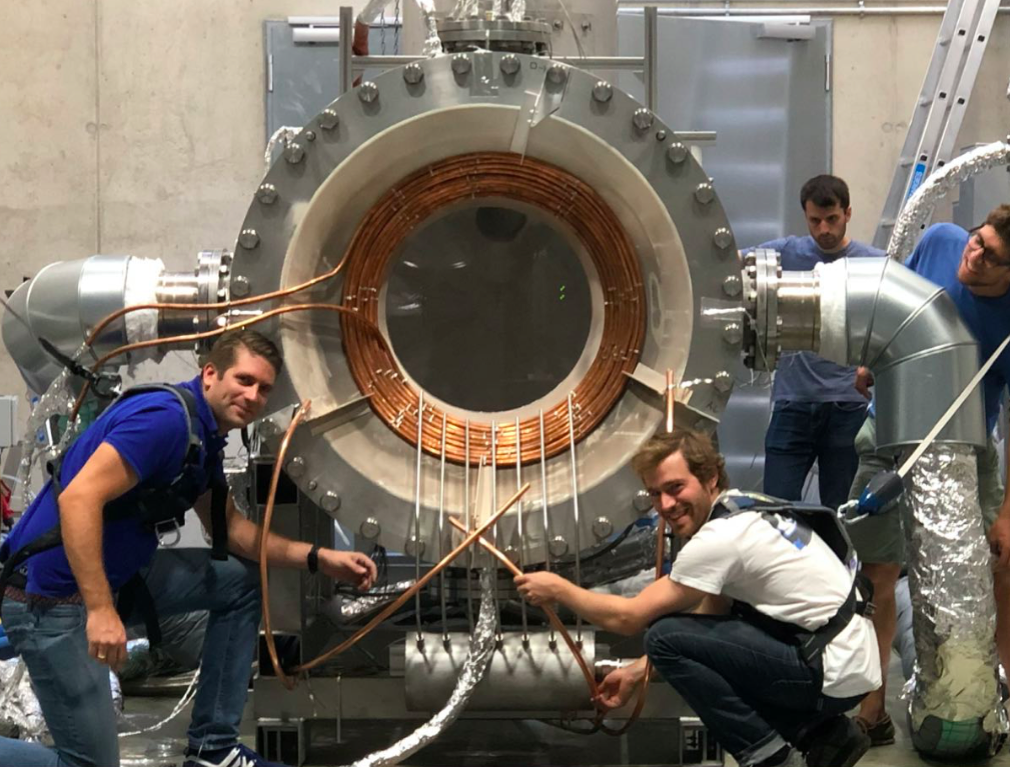
Solar fuel researchers test the solar thermochemical reactor designed for Synhelion’s jet fuel production
Solar fuels are made using thermochemistry driven by direct heat from the sun
In this process, solar thermal energy provides the heat for thermochemical reactions to produce new compounds such as green hydrogen or sustainable aviation fuel. Highly concentrated solar heat is reflected off thousands of mirrors in a solar field surrounding a tower receiver to heat a solar reactor.
These reactions are used to extract hydrogen from molecules of water (or other hydrogen-containing compounds) and to make chemical compounds like ammonia or hydrocarbon fuels like aviation fuel. National research laboratories around the world are advancing solar fuels using solar thermochemistry.
Many designs are being tested for the solar reactors, heat transfer fluids, and thermal storage capable of very high temperatures ranging from 700ºC to 1500ºC. Research results are shared at annual SolarPACES Conferences and published in peer-reviewed journals such as Energy, Solar Energy, The Journal of Energy Storage, Solar Energies, etc.
SolarPACES Task II Solar Chemistry Research is tasked by the International Energy Agency with furthering solar fuel research, which is carried out by affiliated member nations. The resulting solar fuels would be a sustainable and renewable alternative to traditional fossil fuel-based thermochemical processes that produce many fuels, chemicals, and materials, and has been recognized by at COP26.
Thermochemical solar fuels have the advantage over biofuels that the land use for the solar field of heliostats is much lower, and the advantage over solar e-fuels (using PV) of being more thermally efficient, as the heat is produced directly from solar thermal energy.
The chemistry reactions are heated using very highly concentrated solar flux. To generate the heat, a solar field of mirrors called heliostats focuses thousands of reflections of the sun (many “suns”) up to a solar receiver that heats up to as high as 1500°C, using the heat in an adjacent solar reactor to heat the chemical reaction.
Solar thermochemical production of hydrogen, ammonia, and jet fuel are among the most promising lines of research, with the first commercial applications in aviation fuels that meet Aviation Standards for jet fuel. Hydrocarbon fuels like gasoline, diesel, and jet fuel consist of hydrogen (H) and carbon (C) elements in various molecular configurations.
The raw materials to produce any hydrocarbon fuel can be found in any materials that contain the chemical elements; hydrogen and carbon, such as water and carbon dioxide. Both hydrogen and carbon are found in numerous compounds, so they can be extracted from any materials that contain these elements.
 See also How Concentrated Solar Power works
See also How Concentrated Solar Power works
For solar fuels research, check Task II, Solar Chemistry Research.
For interviews with some of the pioneers in solar fuels, check out news and interviews here with Aldo Steinfeld and Christian Sattler.
View all solar fuels news and interviews with researchers in this field.
Some recently published academic papers on solar thermochemistry
For SolarPACES member countries’ laboratories, see Affiliated Research Facilities and Capabilities of Each of the Solar Fuels Research Institutions













































